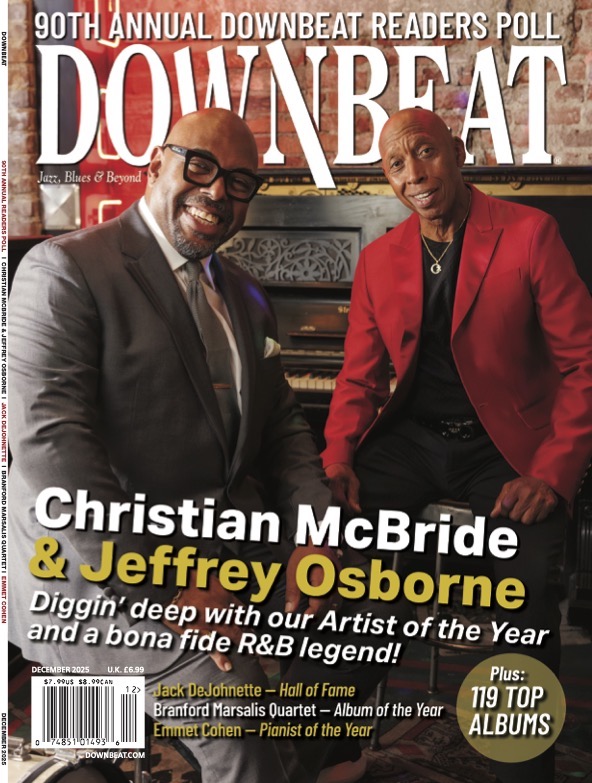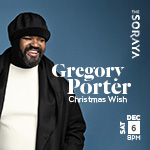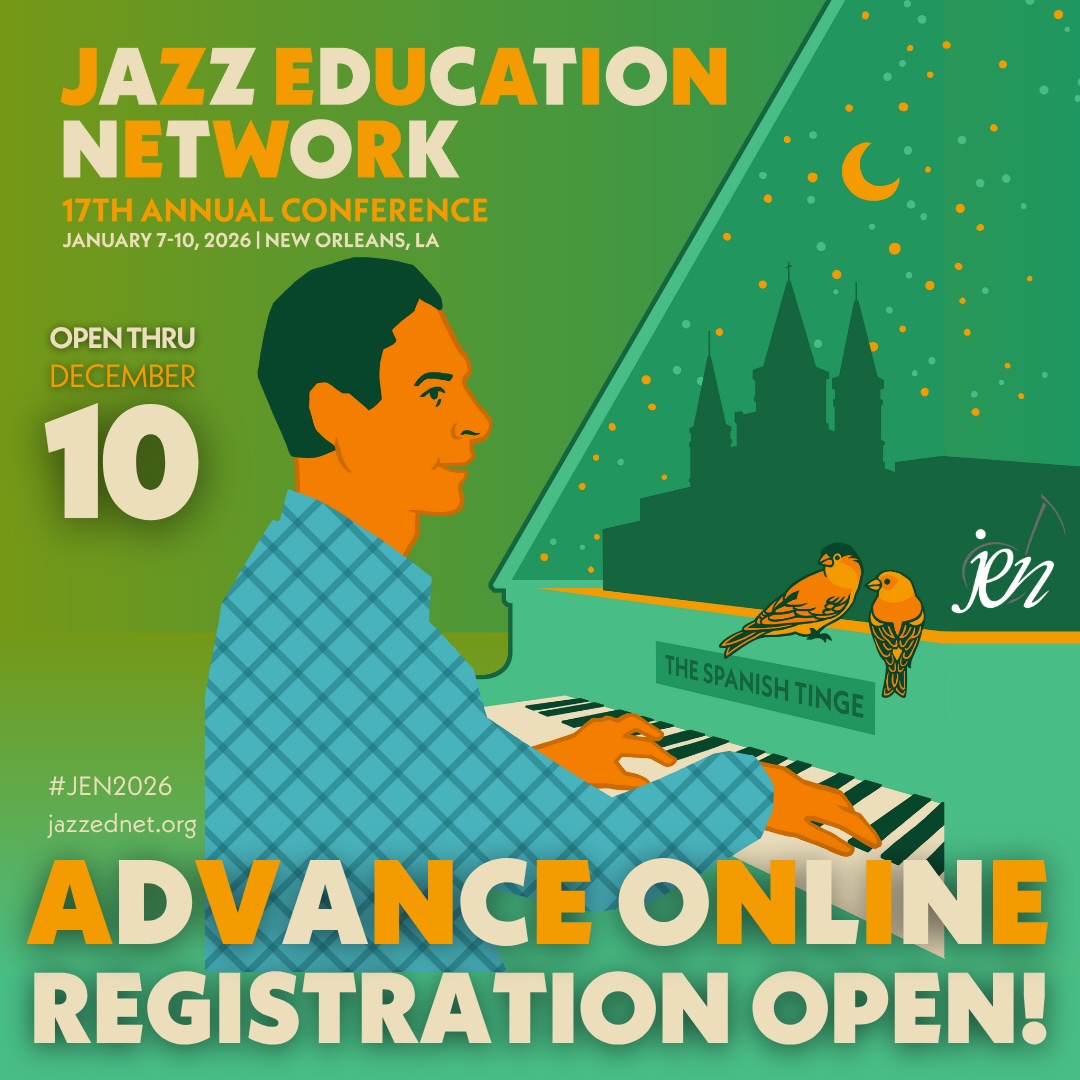Oct 28, 2025 10:47 AM
In Memoriam: Jack DeJohnette, 1942–2025
Jack DeJohnette, a bold and resourceful drummer and NEA Jazz Master who forged a unique vocabulary on the kit over his…
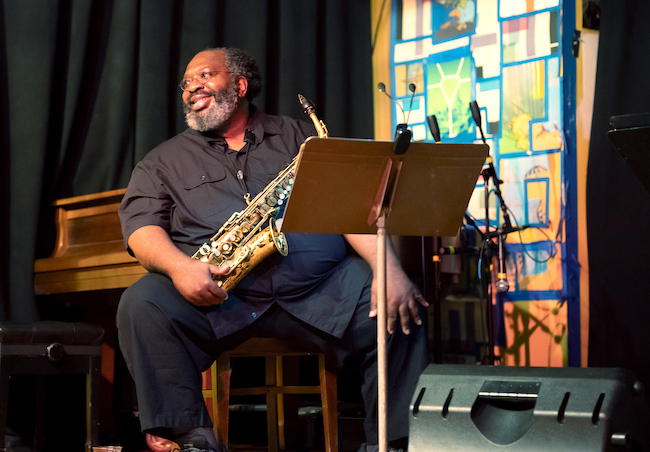
“My music is about the human condition,” said Darius Jones in introducing his song “No More My Lord” at the inaugural Sound & Gravity Festival.
(Photo: Julia Williams)Chicago is notorious for its meteorological extremes, but the gods of weather gifted the city five straight days of shirtsleeve temperatures and sunny skies during the second week of September. The setting was perfect for the inaugural edition of Sound & Gravity, which took place in a series of established and ad hoc venues situated along a walkable half-mile stretch of Belmont Avenue.
The festival is curated and produced by Mike Reed, formerly the producer of the Pitchfork festival, which shut down after its 2024 edition. Thus, it benefited from years of festival production experience; concerts started and ended on time, and food, drink and merchandise were never hard to procure. At the same time, it had the upstart charm of something that’s still forming its own identity. Two venues, Rockwell On The Water and Guild Row, were repurposed commercial spaces, with acoustical properties that were not always adequate to the louder, more rock-oriented acts. The musically dedicated locations, on the other hand, were already set up to handle a well-chosen array of cutting-edge jazz, experimental, folk, classical and rock performers.
The programming brought to mind a smaller, more jazz-forward version of Big Ears. Like that event, Sound & Gravity attendees wandered from venue to venue, making hard choices, such as whether to see Mary Halvorson’s Amaryllis or Irreversible Entanglements, Michael Zerang’s Puzzle House or Anna Webber’s Simple Trio, Ganavya or Lea Bertucci & Olivia Block, The Messthetics & James Brandon Lewis or Saccata, and Tarbaby or Body/Head.
The Thursday night program (Sept. 11) at the Hungry Brain included Cooper-Moore and the Darius Jones Trio. With his cane and Crocs, Cooper-Moore looked every inch the senior citizen at leisure, but there was nothing idle about the 79-year-old pianist’s winding journey through a continuum of musical methods that spanned decades. Lush chords gave way to fractal expansions and contractions, which in turn led to a stomping blues spiked with atonal flourishes. Midway through the set, he took to dis- and re-assembling show tune sonorities, as though he were writing a new book of standards on the spot. Jones’ set, drawn from his album Legend Of e’Boi, was similarly wide-ranging. The alto saxophonist deployed his bristling tone in long, unpredictably winding lines that lanced through terse, driving grooves and post-punk detonations. He introduced his setting of “No More My Lord,” a work song sung by Henry Jimpson and collected by Alan Lomax, with the statement, “My music is about the human condition”; the seething, anguished sound that followed acknowledged the grave circumstances that many humans in this country continue to face. Around the corner at Constellation, the Saccata Quartet, which comprises guitarist Nels Cline, bassist Darin Gray and drummers Chris Corsano and Glenn Kotche, created an enveloping sonic environment. While the group has only played a few concerts in its existence, it is made of duos that have been together for decades, and their rapport is both trusting and exploratory. In particular, Corsano’s madly exuberant performance on a stripped-down kit and the sonic surfeit that Kotche obtained from a massive electro-acoustic one provided plenty of both visual and sonic contrast.
The Chicago Underground Duo open the Friday sequence at Beat Kitchen, which hosted ensembles that required amplification. They played material drawn from their new album Hyperglyph with a thrilling combination of control and abandon. While much of drummer Chad Taylor and trumpeter Rob Mazurek’s instrumentation was acoustic, they used the sound system to push Mazurek’s mostly wordless vocals and arpeggiating synth patterns into the red. This had the effect of fusing futuristic effects with a Brazilian street party vibe, while Taylor’s playing was a clinic in locating swing at the core of all the world’s rhythms. Down the road at Constellation, Mary Halvorson’s Amaryllis also had a new record to support, and they opted for a more refined audio strategy that showcased the carefully balanced instrumental colors on About Ghosts. While the enduring novelty of Halvorson’s guitar tone pushes boundaries, it took second place to the mercurial cascade of Adam O’Farrill and Jacob Garchik’s brass and Patricia Brennan’s vibes. While the leader contributed a marvelously vertiginous solo on “Absyinthian,” she looked happiest when she was laying out and listening to the rest of the band realize her arrangements.
The first set at Constellation on Saturday was Washington, D.C.-based bassist Luke Stewart’s Chicago Quartet. The group’s complement — drummer Avreeayl Ra, pianist and synthesist Jim Baker, and Ken Vandermark on saxophones and clarinet — includes representatives of several Chicago sub-scenes. They found common ground in a roiling, forward-thrusting free conversation that made plenty of room for players to contribute material that contrasted with the prevailing vibe. Back at the Hungry Brain, Fred Moten and Brandon Lopez mined a singular vein of words, rhythm and solid sound. Motem is not a poet, but an aggregator and synthesizer of historical and cultural information. He doled out deliberately spoken phrases while a glowering Lopez beat deep reports and wrenched knotted harmonics from his double bass. While Moten’s texts made explicit the connections between the sorrowful past and today’s bad news, the duo’s performance also made room for acknowledgements of the relief obtained from generations of jazz music and some wry humor; when Moten brought up an online critic’s complaint that he was insufficiently lyrical, Lopez quietly commented, “I get that, too.” After that, Zoh Amba’s three-piece Sun Ensemble tapped deep into free-jazz fundamentals. Her broad sound and staccato rhythms on tenor saxophone recalls the early work of Peter Brötzmann, Albert Ayler and Frank Wright. At times Lex Korten’s florid keyboard work and harp-like inside-piano flourishes sounded like a transposition of Ayler associate Cal Cobbs’ harpsichord to piano, and Miguel Marcel Russell’s drumming created a rippling surface that permitted his associates maximum flexibility. While their antecedents were quite clear, their commitment to realizing not just the sound, but intensity of their inspirations, was undeniable.
On the final night, the Andreas Røysum Ensemble debuted its newest music in the city that inspired it. In 2023, the Norwegian bandleader struck up a relationship with Chicago vocalist Marvin Tate, and together they forged an album’s worth of music that mingles 1970s spiritual jazz, Scandinavian folk melodies and Chicagoan street scenarios that is due to be released in December. Tate, who is more of a declaimer than a singer, issued a stream of neighborhood-specific local references and deeply personal memories while Røysum’s group, which included Chicagoan keyboardist Paul Giallorenzo and some superb players associated with the Motvind label (Signe Emmeluth, alto saxophone; Christian Meaas Svendsen, bass; Andreas Wildhagen, drums; Røysum, clarinets), fluidly navigated shifts between uplifting surges of melody and abstract environments. It’s an unlikely combination, but that worked to its favor; there’s nothing else around that’s quite like this partnership. DB
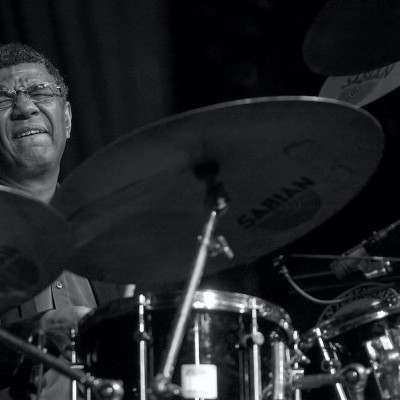
Jack DeJohnette boasted a musical resume that was as long as it was fearsome.
Oct 28, 2025 10:47 AM
Jack DeJohnette, a bold and resourceful drummer and NEA Jazz Master who forged a unique vocabulary on the kit over his…
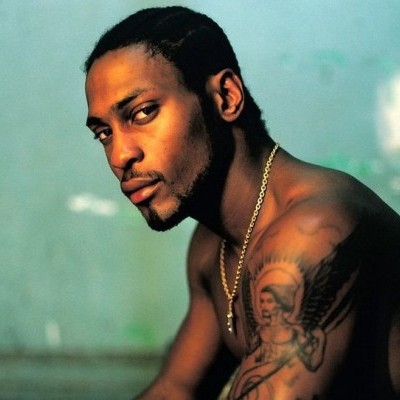
D’Angelo achieved commercial and critical success experimenting with a fusion of jazz, funk, soul, R&B and hip-hop.
Oct 14, 2025 1:47 PM
D’Angelo, a Grammy-winning R&B and neo-soul singer, guitarist and pianist who exerted a profound influence on 21st…
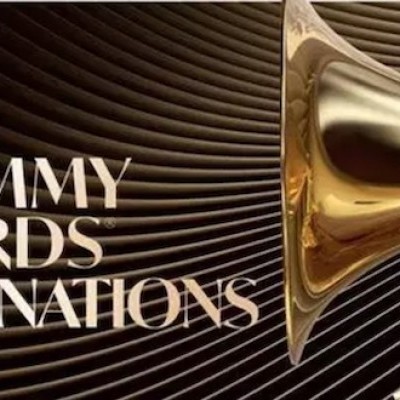
To see the complete list of nominations for the 2026 Grammy Awards, go to grammy.com.
Nov 11, 2025 12:35 PM
The nominations for the 2026 Grammy Awards are in, with plenty to smile about for the worlds of jazz, blues and beyond.…
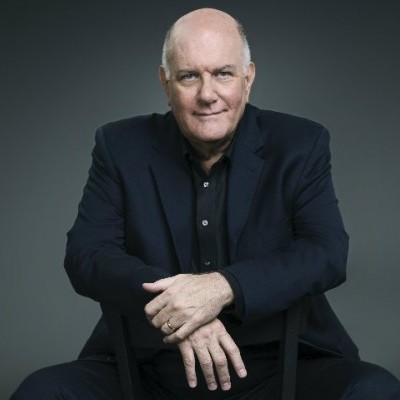
Jim McNeely’s singular body of work had a profound and lasting influence on many of today’s top jazz composers in the U.S. and in Europe.
Oct 7, 2025 3:40 PM
Pianist Jim McNeely, one of the most distinguished large ensemble jazz composers of his generation, died Sept. 26 at…
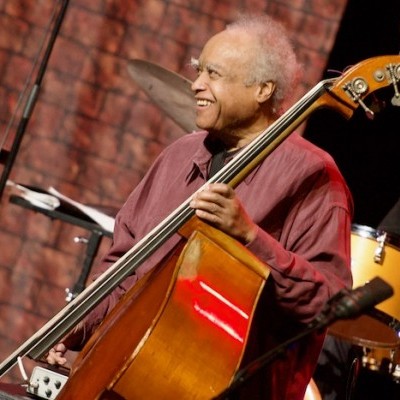
Drummond was cherished by generations of mainstream jazz listeners and bandleaders for his authoritative tonal presence, a defining quality of his style most apparent when he played his instrument unamplified.
Nov 4, 2025 11:39 AM
Ray Drummond, a first-call bassist who appeared on hundreds of albums as a sideman for some of the top names in jazz…

